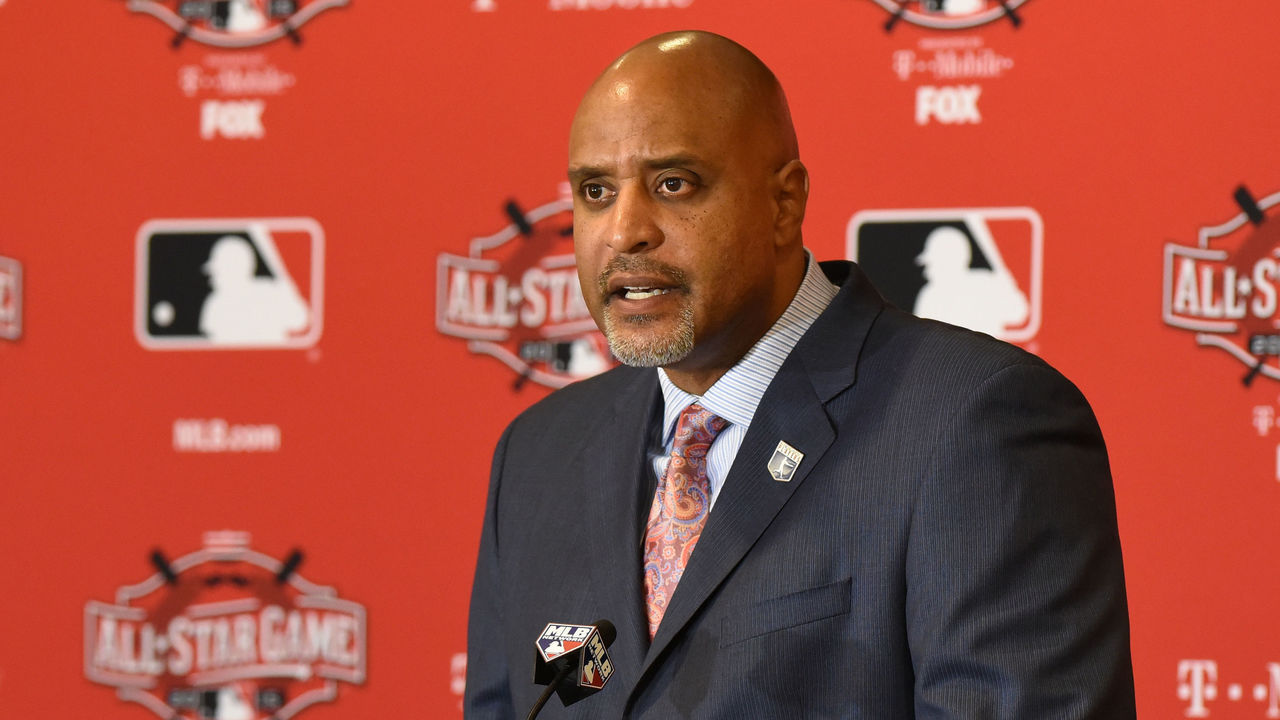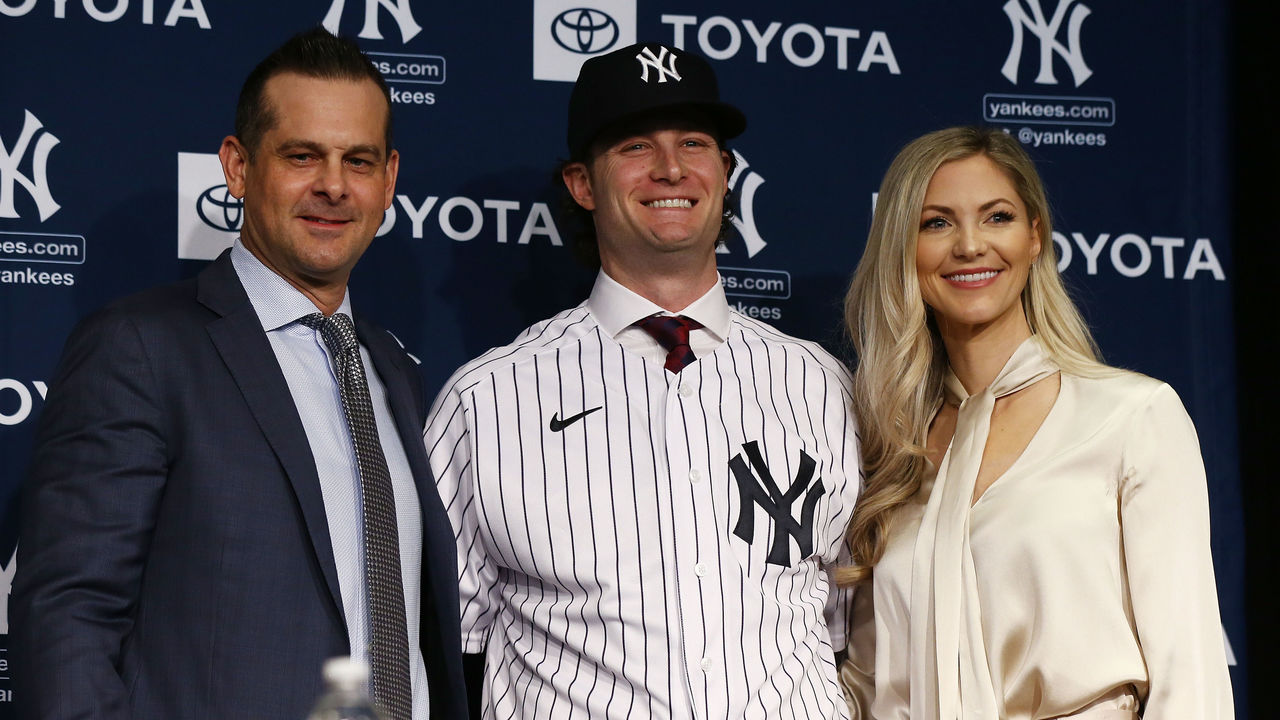MLB's luxury-tax proposal is trying to squeeze a cap on salaries
Free agency, service-time manipulation, and the minimum salary for pre-arbitration players are among the issues being discussed and debated during this baseball lockout.
But the issue that is most concerning to some members of the players' camp - something that the owners seem especially adamant about - is strengthening the luxury tax.
As one agent told theScore after MLB made its latest offer to the players on Saturday: "They are creating a salary cap."
The luxury tax was introduced in 1997 and later rebranded as the competitive balance tax. It currently acts as a soft salary cap. (Owners tried and failed to implement a cap during the 1994-95 strike.)
The earliest tax plan only affected the five highest-spending teams. The threshold structure that exists now first appeared in the collective bargaining agreement that was in effect from 2003-06. Any team that exceeded a payroll of $117 million in 2003 paid a tax on the amount of money it spent above the threshold. The threshold has risen over time - it was $210 million last season - but the structure has remained in place, a reminder that it is difficult to remove something once it appears in the CBA.

The MLBPA's concern is that, since its inception, the base tax level has grown at a far lower rate than MLB revenues. That gap has only grown in recent years, and the divide would be exacerbated under the proposal MLB presented to players Saturday.
The union, though, as one industry source notes, has always refused to directly tie the players' share of earnings to MLB revenues.
From 2003 to 2019, the last full season before the COVID-19 pandemic, league revenues grew 167%, from $3.88 billion to $10.37 billion, according to data published at Statista. The base tax threshold rose 76% in that period, from $117 million to $206 million.
The discrepancy increased most steeply in recent years. From 2011 to 2019, the tax threshold grew by just 15.7%, including four years of no increases and three with 1% increases. Meanwhile, MLB revenues grew 63%.
The players are now trying to catch up, proposing a $245-million tax threshold for 2022. That's down slightly from a previous proposal but would still be the biggest increase (16.7%) since the threshold system was introduced. Under their proposal, the threshold would gradually rise until it reached $273 million in 2026.
Had the tax threshold risen by 5% annually since the start of the 2012 season, generally mirroring MLB revenue growth, it would have been $276 million last season.
MLB countered Saturday with base thresholds of $214 million for the first two years, then $216 million, $218 million, and $222 million. That's the same as its previous offer but with increases of $2 million per year in the final three years.
Complicating these negotiations is the impact of COVID restrictions on MLB's revenues in 2020 and to a lesser extent again last season. MLB's revenues in 2021 were down 10% from 2019 levels, according to a source, returning to the 2017 levels of around $9 billion. The decline was fueled by a 35% decline in ticket sales. Ticket sales generate about half of baseball’s revenues.
Assuming that MLB revenues will return to pre-COVID levels this year and rise by 5% annually through 2026 - a projection that another source familiar with the talks called "conservative" for a league that's averaged better than 6% yearly growth from 2003-19 - the gap only widens.

If 2021 revenues turn out to have rebounded close to 2017 levels, with 5% growth, MLB would exceed $12 billion in revenue in 2026. The league is proposing increases to the base tax threshold each year ranging from 0%- 1.9%.
MLB's tax proposal also continues to feature additional tax tiers beyond the base level and more severe penalties for exceeding those thresholds. In the 2017-21 CBA, additional taxes were levied on teams that spent at levels $20 million and $40 million above the base level. MLB wants to keep those tiers.
In the last agreement, teams that spent beyond the thresholds paid tax penalties of 20%, 32%, and 62.5% on the amount of payroll that exceeded the three levels. The rates were higher for teams that spent into any tier in consecutive years, but the penalties reset to first-time rates after a club's payroll dipped below the base threshold for one season. On Saturday, MLB proposed increasing the tax rates to 50%, 75%, and 100%, regardless of whether the team was a first-time or repeat offender, and added draft-pick penalties for going over the second and third tiers. Exceeding the top tier would mean losing a first-round draft pick.
The only change from MLB's previous proposal was dropping one new penalty (the loss of a third-round pick for spending beyond the base threshold).
Players have no interest in any of that.
The league's movement on the tax was arguably more meaningful than its responses regarding the minimum salary and pre-arbitration pool. It suggests the luxury tax is a chief item of interest for owners. Is MLB digging in?
The players fear that strengthening the tax system will only put more downward pressure on free agency, which is already under stress as analytically inclined front offices have a better understanding of aging curves and the decline in performance from players in their 30s. Teams will avoid spending to or over the tax threshold by continuing to lean on younger, cost-controlled players over veteran free agents.
Advances in player development may aid that effort by helping teams produce more and more quality young (and cheap) players.

As it is, teams rarely exceed the tax thresholds. Only nine franchises have paid a competitive balance tax since 2003. The Yankees, the most prolific taxpayer to date, stayed under the threshold in 2021.
The owners' stronger proposed penalties would induce even the richest teams to hold the line on spending. The so-called soft cap suddenly looks a lot more rigid. The union counts on the top free agents (and largest-market clubs) to set the market for all other players in both free agency and arbitration.
Down the road, if MLB revenue growth continues to greatly outpace increases to the tax threshold level, the cap-like effect would spread to a wider range of teams and market sizes.
For example, let's say the tax threshold continues to rise by 3.6% annually (as it has on average from 2003-19), and collective revenues keep growing at 6.3%, as they have. Eventually, almost every team would comfortably have the cash flow to build payrolls that exceed thresholds. But if it remains rare for teams to cross the threshold, the cap effect would become more common. It would no longer be a tax on large-market payrolls - it would become a tax on the middle tier of teams.
Recall that the luxury tax was introduced in the late 1990s to prevent runaway spending by a few wealthy clubs at a time when players were negotiating to avoid an actual salary cap.
Years ago, the MLBPA also made a mistake by failing to secure any mechanism to force minimum spending by lower-tier payroll clubs. Players don't want a cap-and-floor salary system like other sports, but in reality, they already have a soft salary cap without a floor to prop up their cut of revenue.
One could argue, as I did in the summer, that baseball, at least for many small- and mid-market fans (and some mid-tier free agents), would be better off with a system that included a floor, forcing persistent low-payroll teams like those in Pittsburgh, Cleveland, and Miami to spend more.
The owners floated a $100-million salary floor last summer, but it came attached to a $180-million base tax threshold. That's essentially a return to the tax levels from a decade earlier. The MLBPA had no interest in it.
The sides are so far apart on this issue and others that the start of the season is in real jeopardy.
In order to have a 28-day spring training, which MLB commissioner Rob Manfred mentioned as a target last week, a deal would need to be struck on or around Feb. 26 to avoid missing regular-season games.
The owners cracked open the door to a salary cap 25 years ago, and they seem intent on trying to inch closer and closer to it in practice, if not in name.
Travis Sawchik is theScore's senior baseball writer.